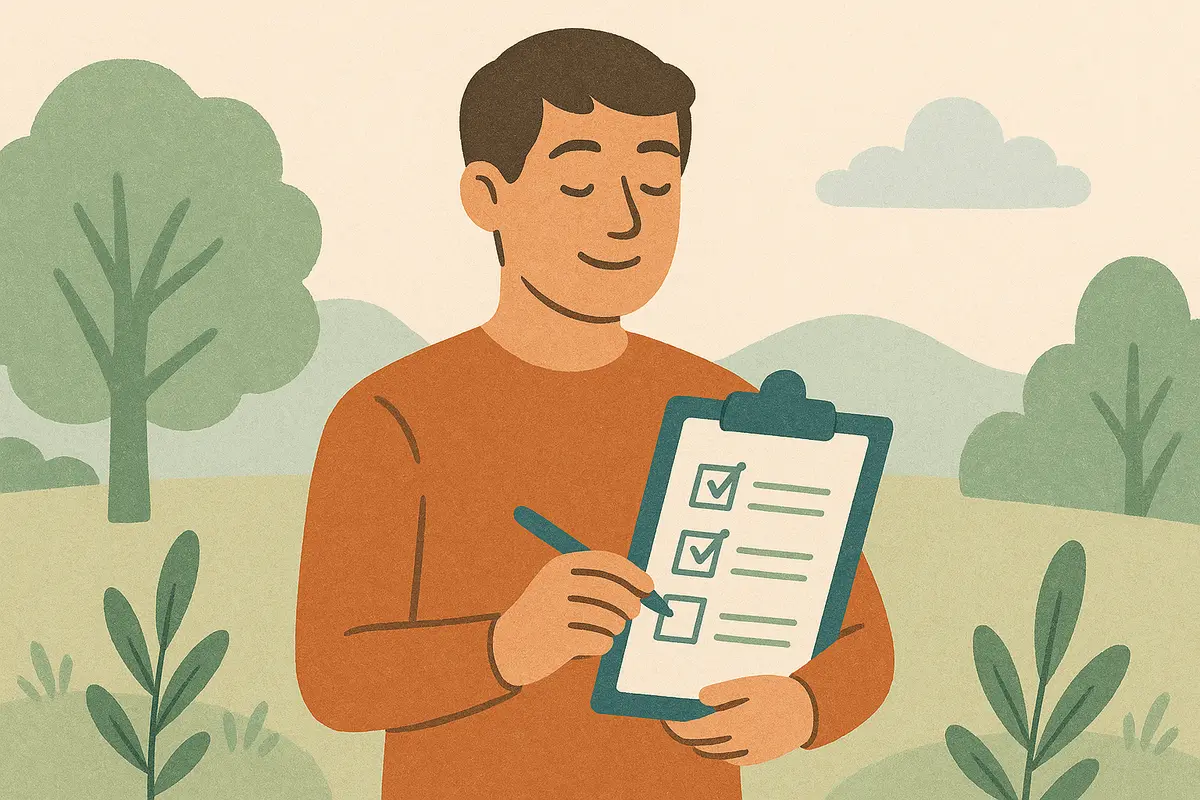An anxiety symptom checklist turns confusing worry feelings into clear, useful information that helps you spot your patterns, figure out your triggers, and take control of your mental health through simple daily tracking.

Picture this: You're sitting at your desk, heart racing after a stressful meeting, wondering if this overwhelming feeling is "normal anxiety" or something more. Your mind keeps asking the same question: "Am I getting better or worse?"
An anxiety symptom checklist is like having a detective's notebook for your mental health. Instead of relying on fuzzy memories of "feeling anxious lately," you track exactly when, where, and how anxiety shows up in your life.
Think of it like checking your blood pressure. You write down what you notice about your anxiety symptoms over time. This turns overwhelming feelings into clear information that both you and your doctor can actually use. Research shows that tracking your own symptoms is one of the best ways to understand anxiety and see if treatment is working.
Think of anxiety like a smoke alarm that goes off randomly. Tracking helps you figure out what's actually setting it off.
You become more aware of what's happening: When you track symptoms, you stop having vague "anxious feelings" and start noticing specifics. You might realize your chest gets tight during certain situations, or your mind races most on Sunday nights. This awareness alone can make anxiety feel less scary.
You spot patterns: After a few weeks, patterns start showing up. Maybe your anxiety spikes before big work deadlines or gets worse when you don't sleep well. Research shows that when people track their symptoms, they can target what actually triggers their anxiety instead of trying random solutions.
You feel more in control: Many people with anxiety feel like symptoms come out of nowhere. Tracking shows you that's usually not true. Your anxiety often follows patterns you can predict and prepare for. This makes the whole experience feel less chaotic.
You catch problems early: When you track daily, you can spot when symptoms start getting worse before they turn into a full panic attack or really bad anxiety episode. This means you can use your coping tools earlier, when they work better.
Your treatment gets better: Both you and your healthcare provider can make smarter decisions about what's working. Should you adjust medication? Try a different therapy technique? Your tracking data helps answer these questions with real information instead of guesswork.
Your brain starts working differently: Here's something interesting - just writing down "heart racing, 7 out of 10 intensity" creates distance between you and your anxiety. You're observing it instead of being completely overwhelmed by it. This mirrors what happens in therapy, where you learn to notice your thoughts and feelings more clearly.
"I keep forgetting to track my symptoms." - Start small with just one symptom at a consistent time. Set multiple phone reminders or link tracking to something you already do daily, like having morning coffee or taking evening medication. Apps with push notifications can help too.
"Writing down my symptoms makes me more anxious." - This happens sometimes when you first start paying closer attention. Try tracking every other day instead of daily. Focus on writing down what helped, not just what felt bad. Limit tracking time to 2-3 minutes maximum.
"I don't see any patterns yet." - Patterns usually take 3-4 weeks to show up clearly. Make sure you're writing down what was happening when anxiety hit - work stress, lack of sleep, too much caffeine. Review your notes weekly, not daily. Be patient with the process.
"My symptoms seem worse when I track them." - Increased awareness can make symptoms feel more intense at first. This usually gets better after a week or two as tracking becomes routine. Remember, you're gathering information to help yourself long-term.
"I'm not sure how to rate my symptoms accurately." - Keep it simple. Use low/medium/high instead of 1-10 scales. Create your own reference points like "medium = I notice it but can still work." Consistency matters more than perfect accuracy.
"I want to share my data but don't know how." - Most apps let you export or share your data. For paper tracking, take photos of your charts or create a simple summary highlighting main patterns. Your healthcare provider will appreciate any information you bring.
"This feels like too much work on top of everything else." - Reduce to just your 2-3 most bothersome symptoms. Try voice memos instead of writing. Or start by tracking only on weekdays until it becomes a habit. The goal is helpful information, not perfect data.